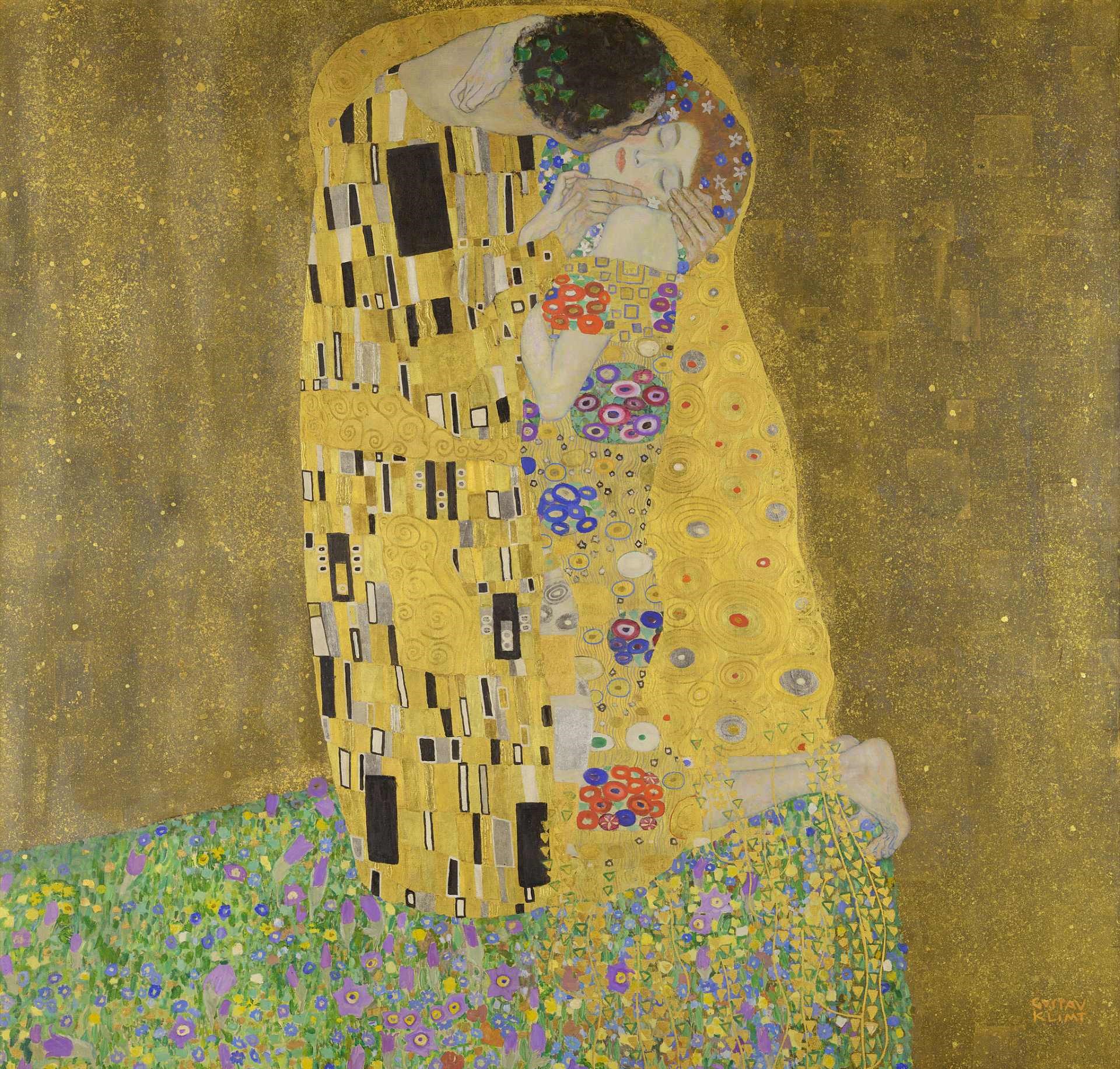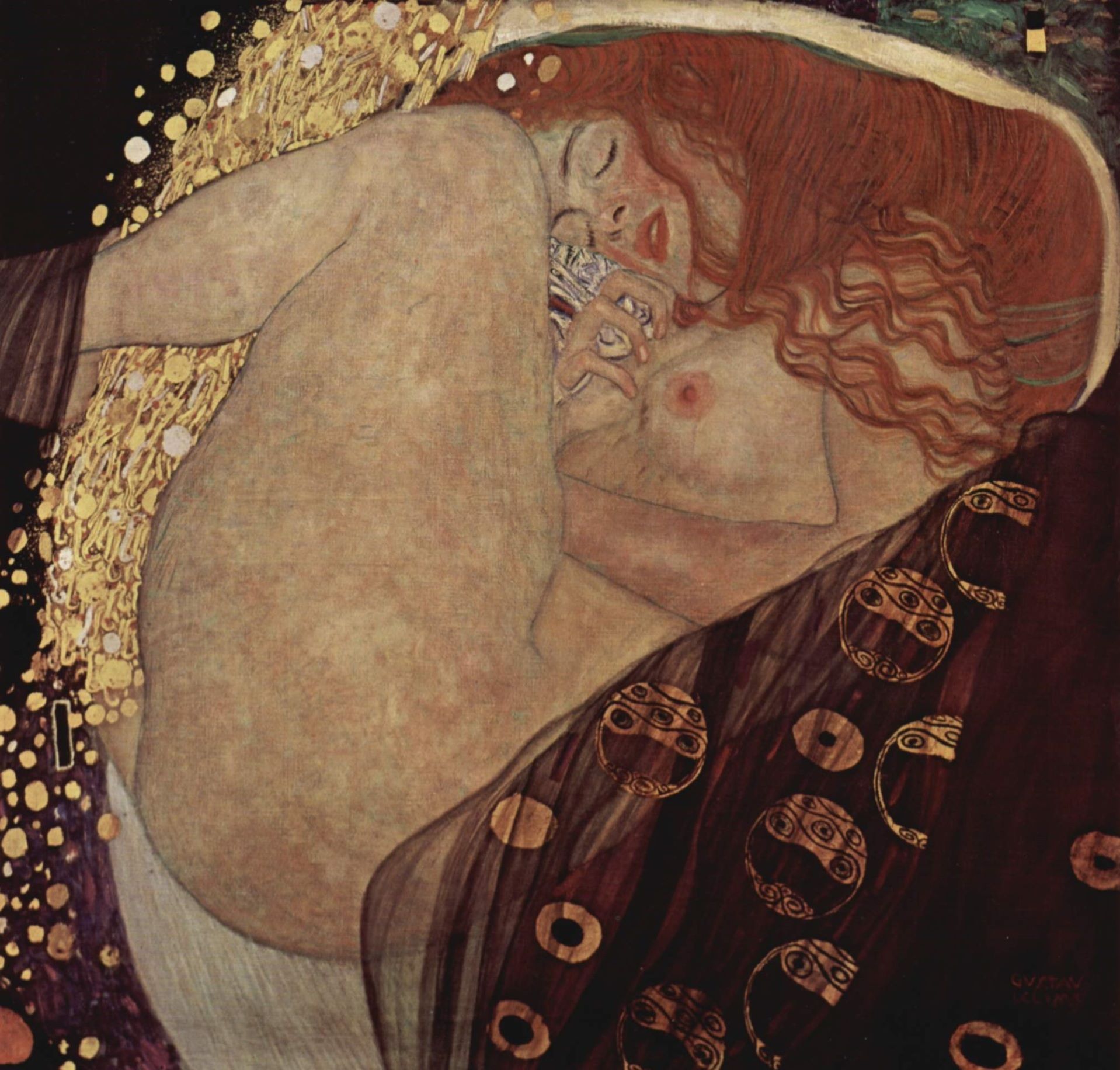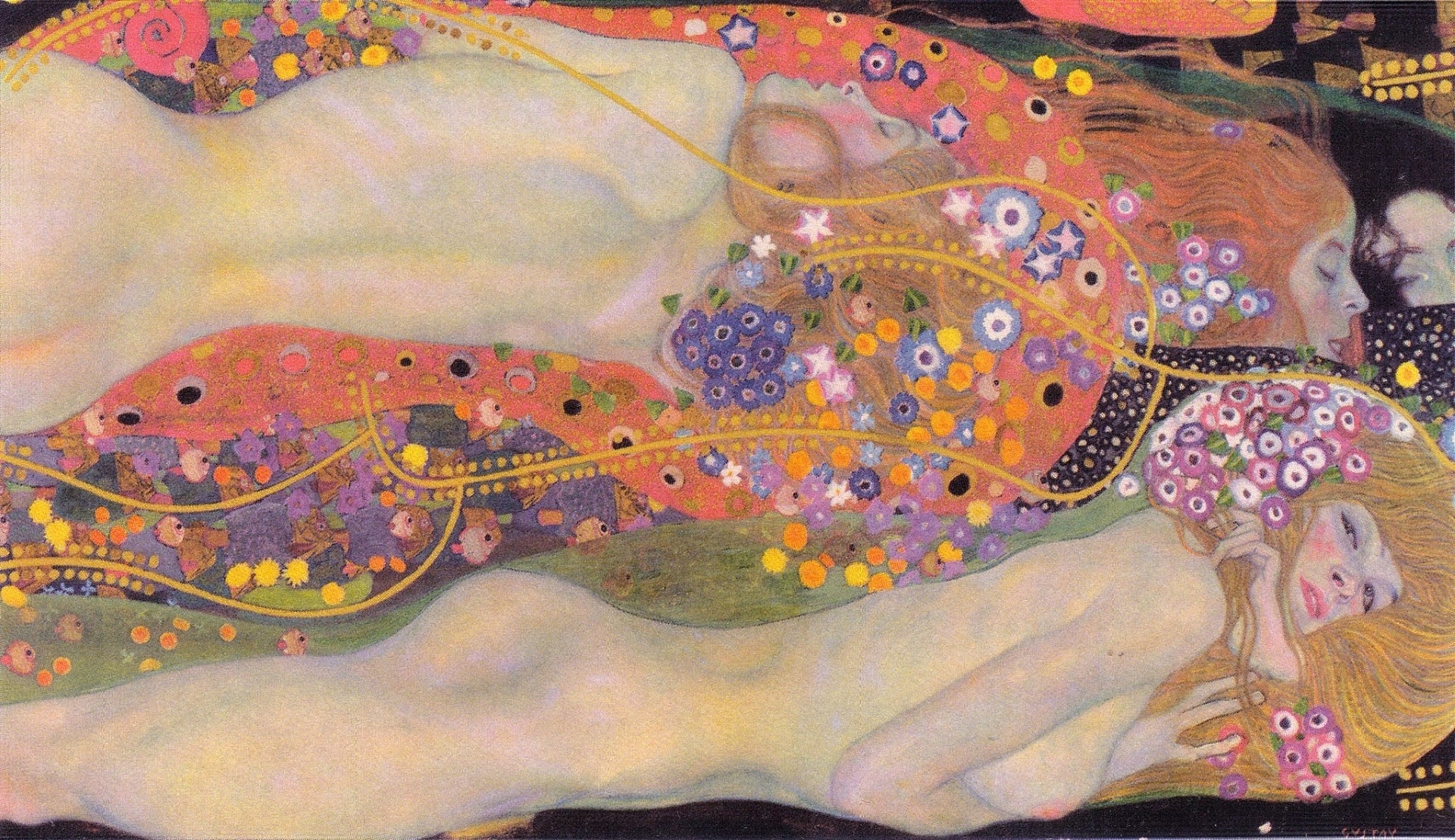
Mysticism and symbolism in the works of Gustav Klimt
Gustav Klimt was renowned for his enigmatic portrayals of women, the radiant allure of gold, and alluring ornaments. One of the fathers of modernism, the Austrian painter Klimt still dazzles us with his mystical and beautiful masterpieces. But what secrets are hidden under the smiles of the pale women and golden ornaments he depicted?
Klimt (1862-1918) was one of the founders of European modernism as well as one of the most known Austrian symbolists. The art of symbolism is highly bounded with mysticism and occult philosophy and practices when artists were searching for new themes and symbols in art.
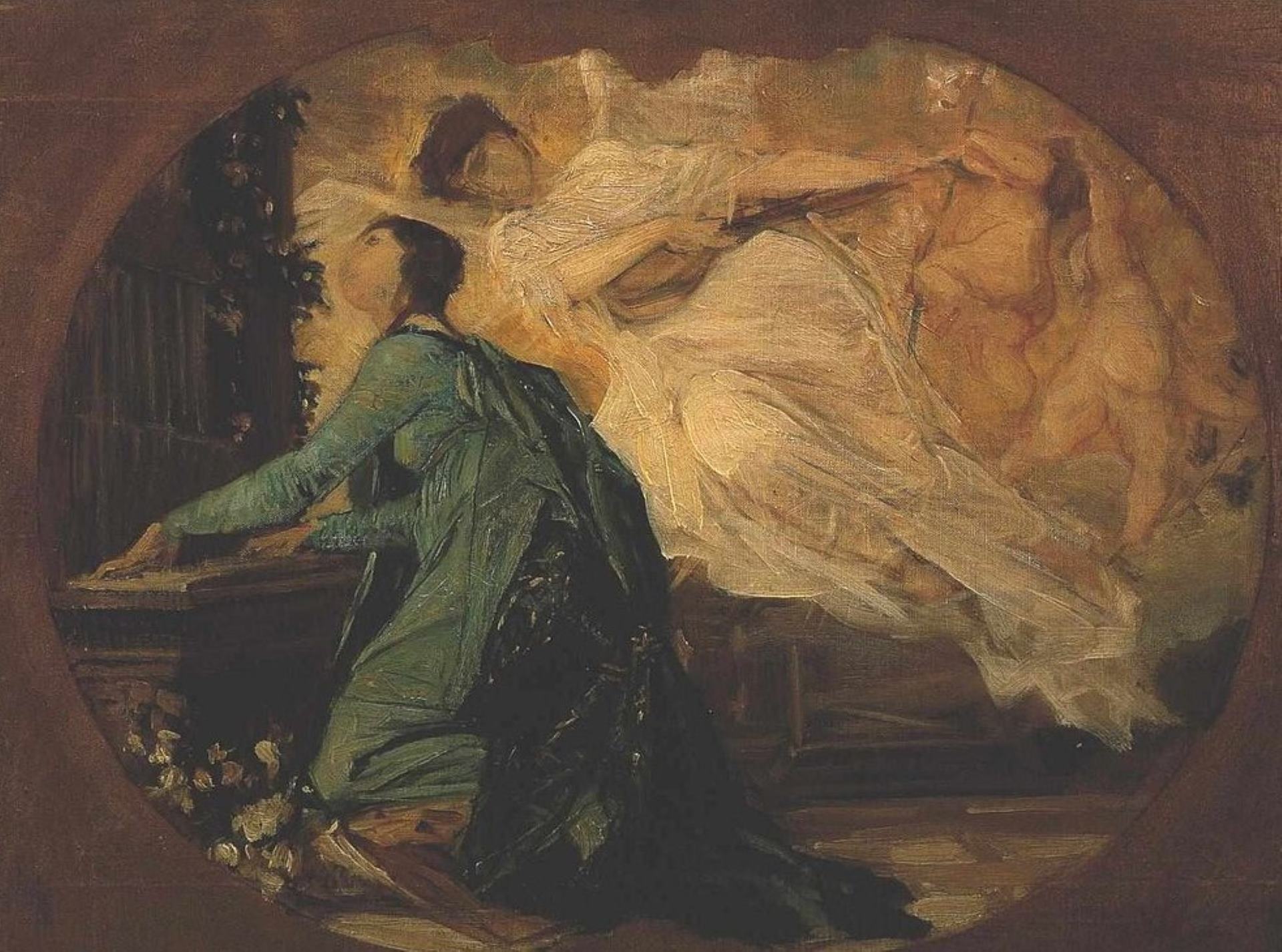 Gustav Klimt ‘Design for the allegory of music (organ player)’, 1885
Gustav Klimt ‘Design for the allegory of music (organ player)’, 1885This context influenced the art of Klimt. Something mystical is felt while looking at his paintings. Mysteriously smiling women or abstract golden backgrounds are not what they seem to be, and something transcendental can be felt through them. The works of Klimt are imbued with profound mysticism and rich symbolism, offering a mesmerising glimpse into the artist's spiritual world.
Gustav Klimt: A visionary artist of the Viennese secession
Born into an artistic family with a gold engraver father, Ernst Klimt, and musician mother, Anna Finster, Klimt decided to follow the footsteps of his seven siblings. From 1876 to 1883 he studied architectural painting at Vienna’s School of Applied Arts and started his artistic career by painting murals and ceilings. Later Klimt was influenced by many symbolist artists, Japanese art and even Byzantine art.
In 1897, Klimt headed the Viennese Secession — an independent association of artists who challenged traditional art. This was the time when artists of modernism were gradually conquering their place of glory on the artistic stage. Through the Secession, artists sought to introduce the public to the newest tendencies of European visual arts as well as establish a platform for artists to freely express their views.
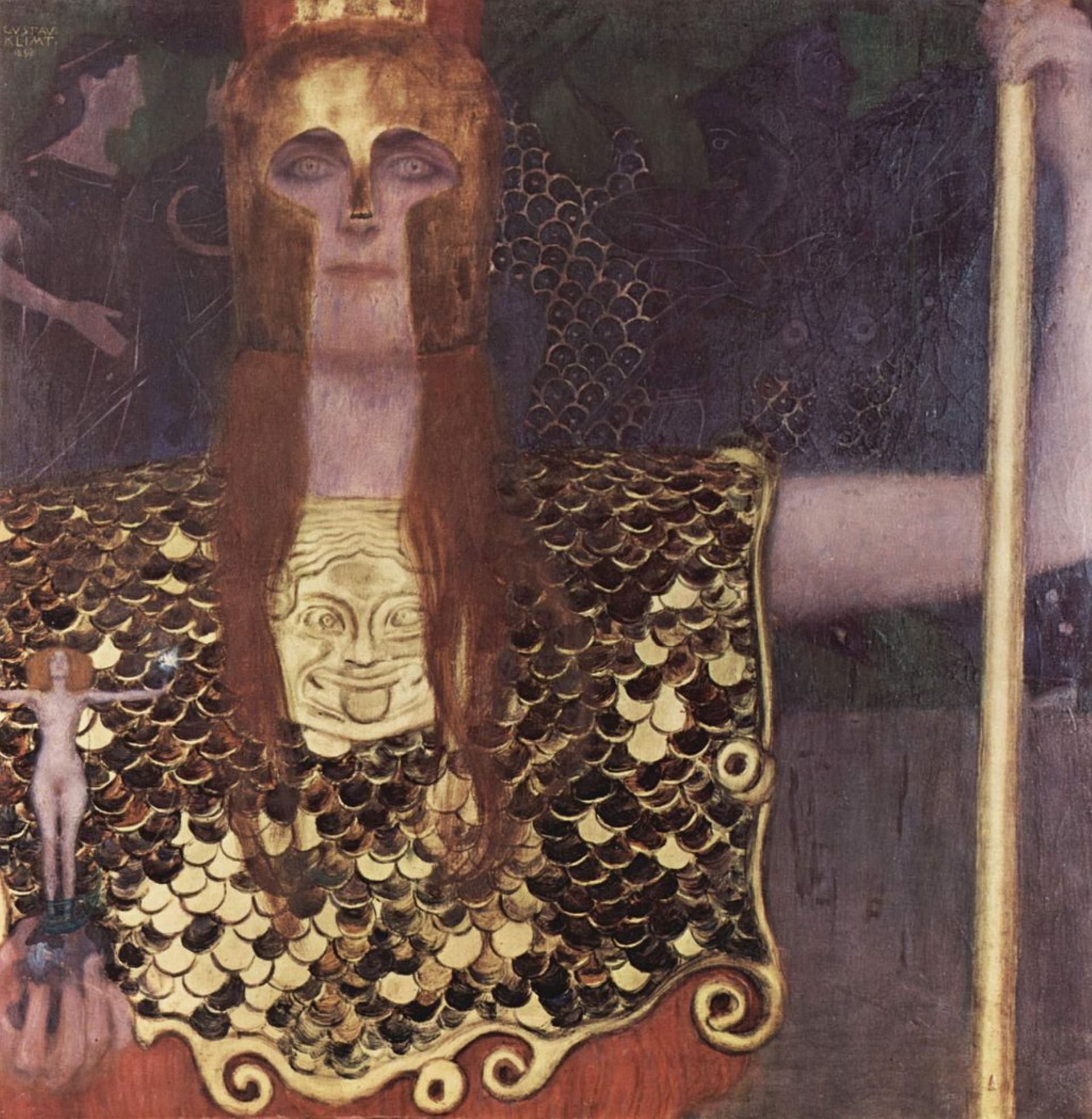
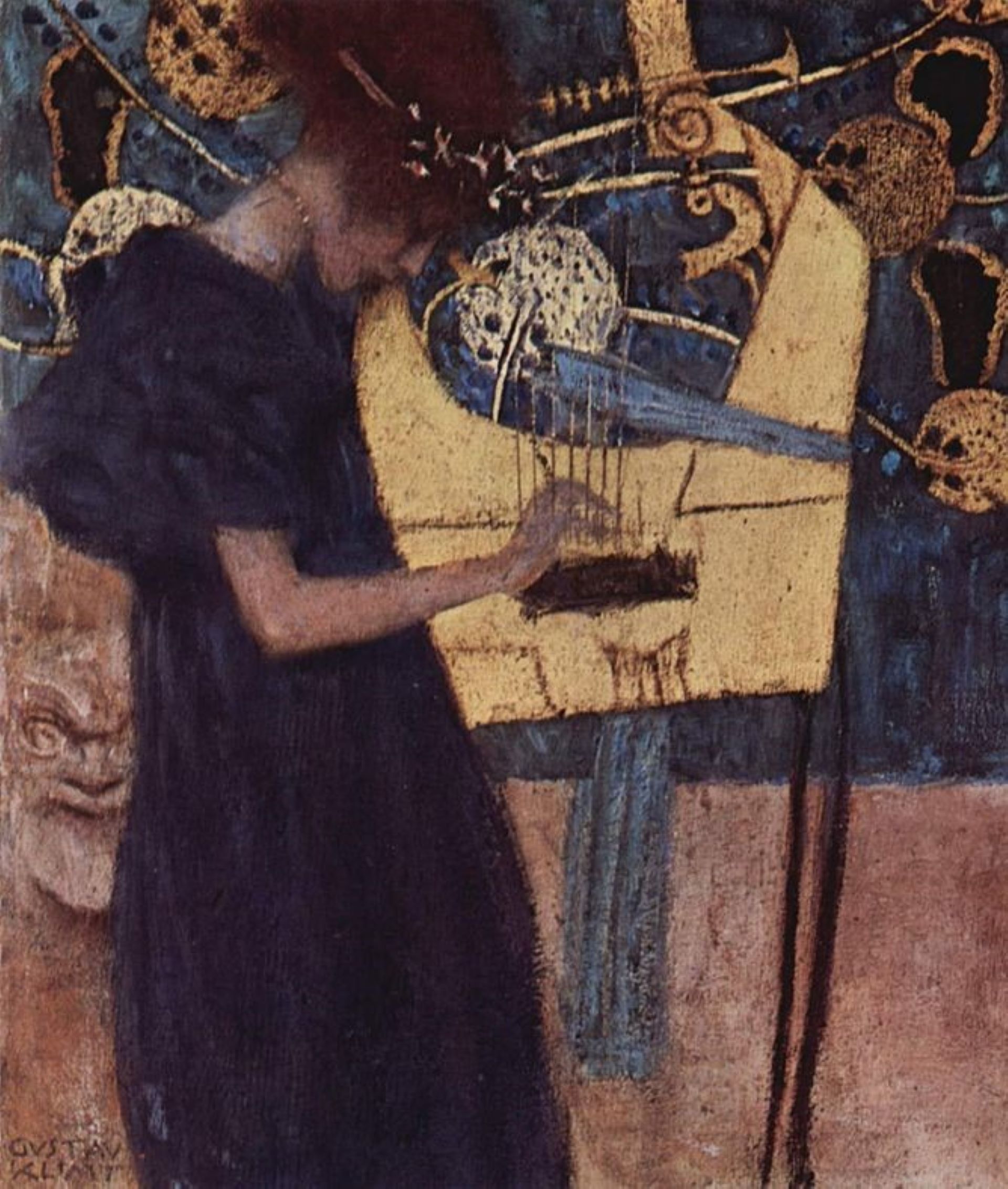
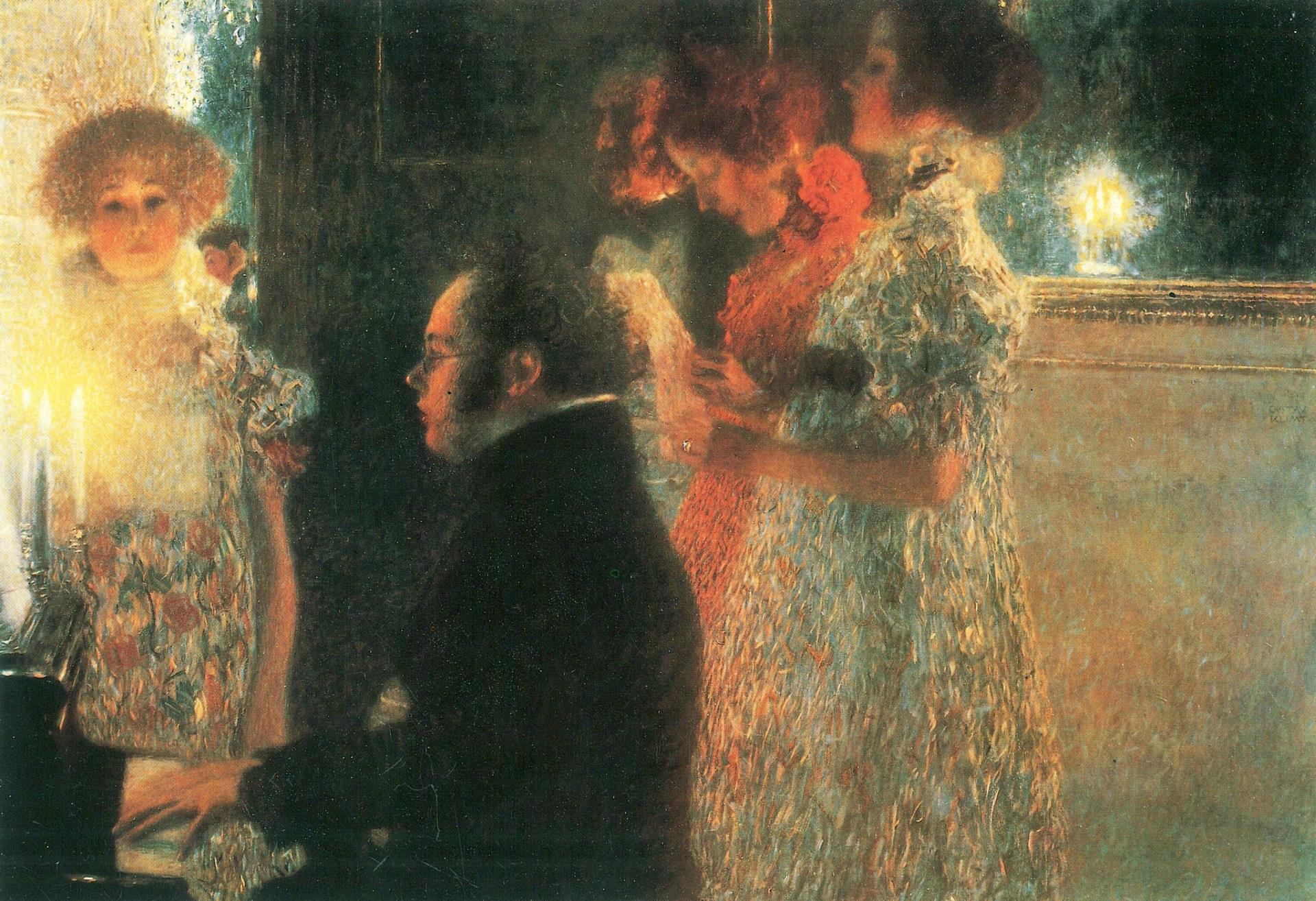
Photo 1 -Gustav Klimt ‘Pallas Athena’, 1898; Photo 2 - Gustav Klimt ‘The Music’, 1895; Photo 3 - Gustav Klimt ‘The Altar of Dionysos’ (detail), 1886-1887.
The first exhibition of the Viennese Secession took place in Austria in 1898. Here Klimt presented the new face of his art which was quite unusual for the public who were used to his usual portraits, murals, or ceilings. Some of the paintings he presented were ‘The Music’ (1895, Bavarian State Painting Collections, Munich), and ‘Pallas Athena’ (1898, Vienna Museum, Vienna). This is one of the points when Klimt ultimately turned to symbolism.
Symbolism in Klimt's Art: Unravelling the allegorical language
Many of Klimt’s paintings are allegorical. In an artistic context, symbolism means the use of concrete images, shapes, colours and sounds to convey a deeper, abstract meaning. Symbolist artists sought to express their ideas and thoughts through symbols, metaphors and allegories, which helped them show a deeper meaning of the world than just surface phenomena.
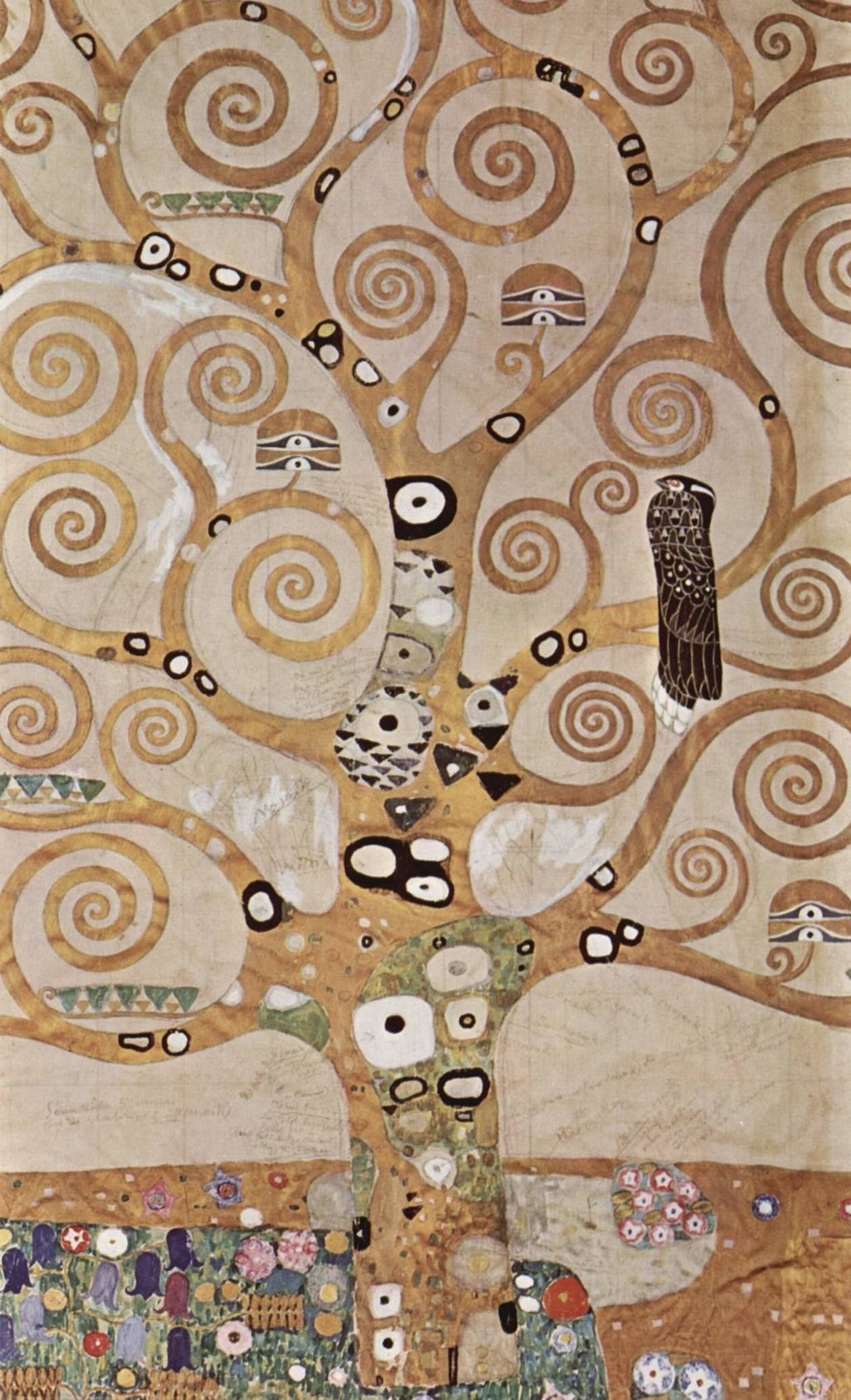
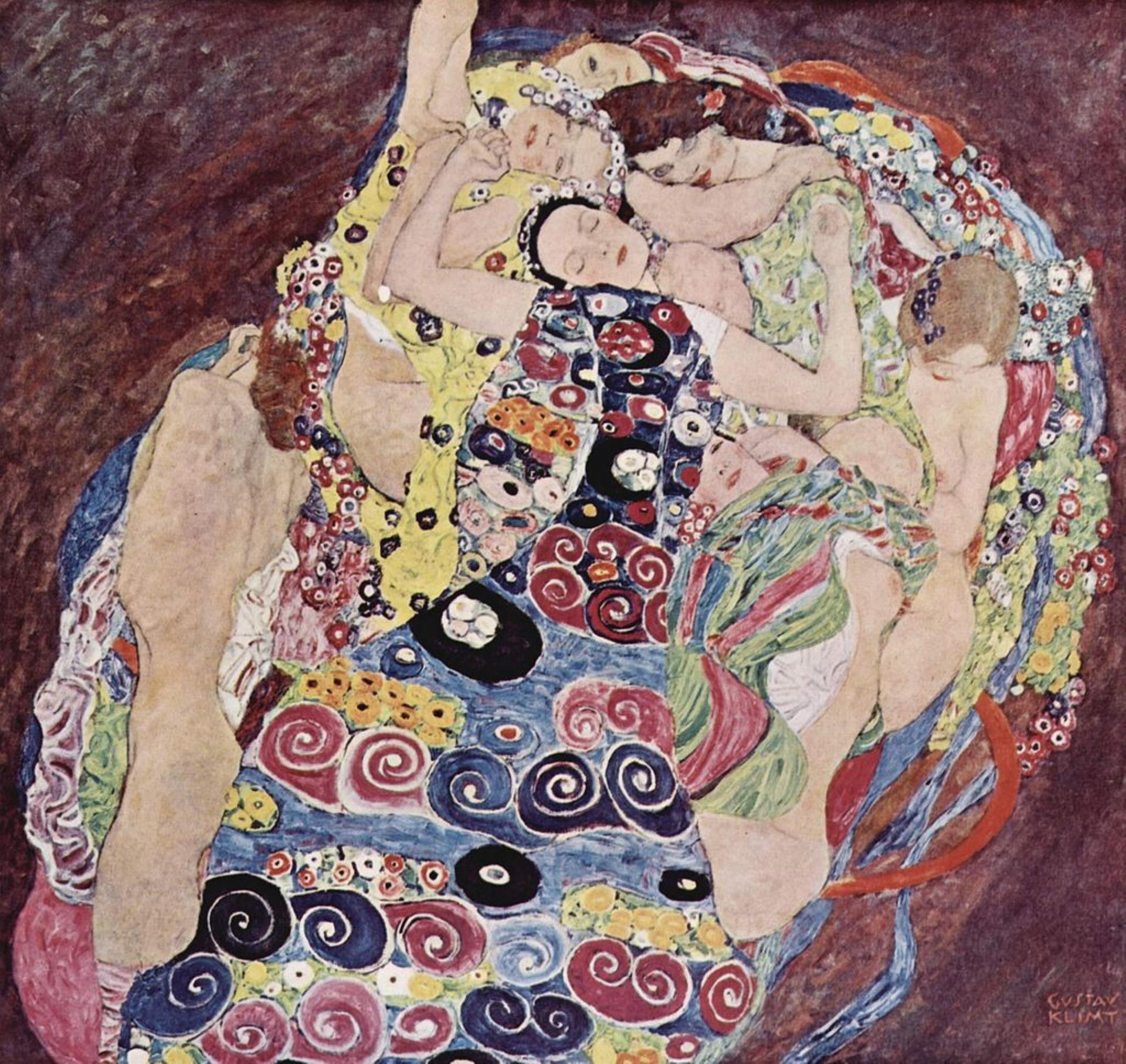
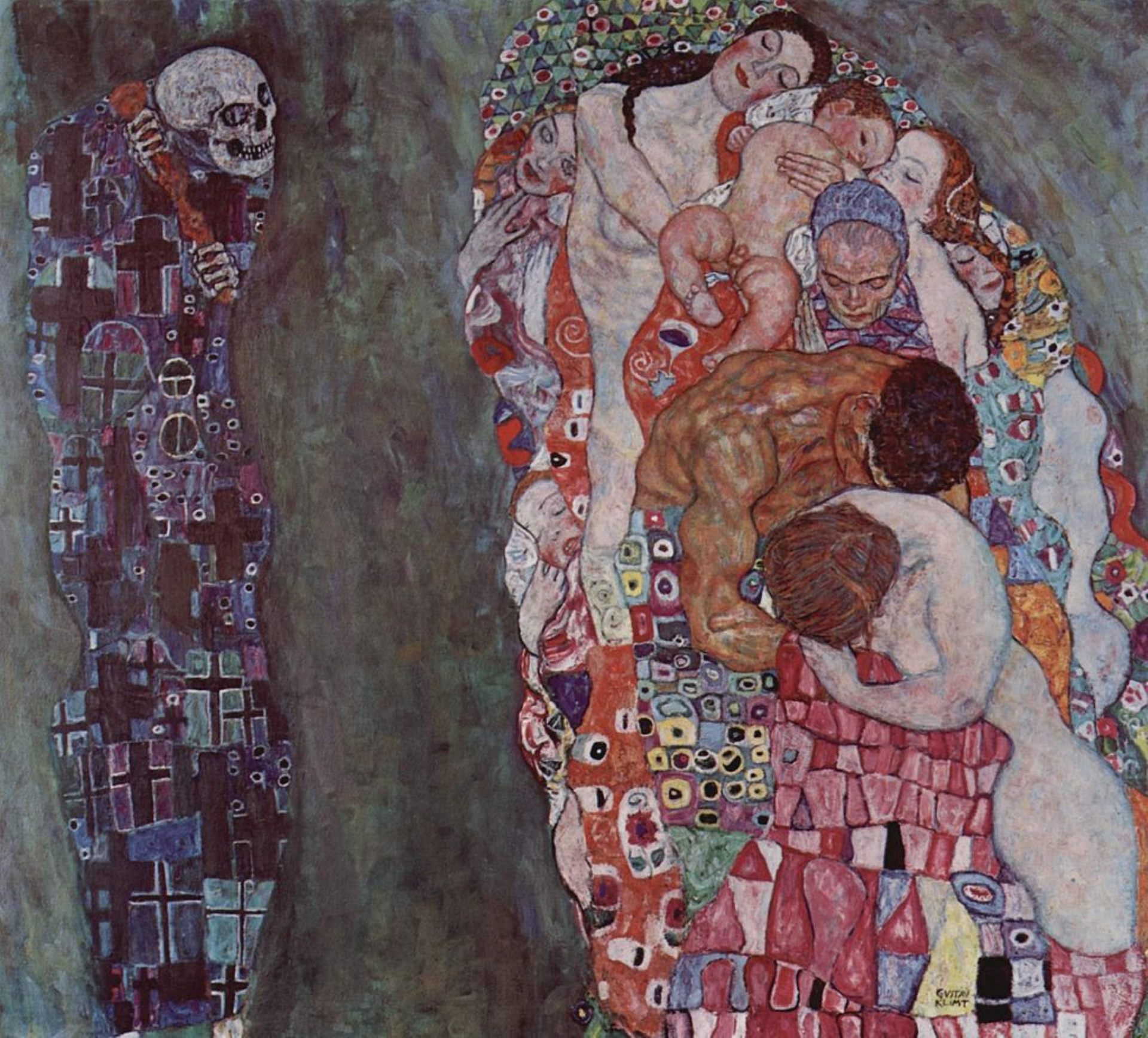
Photo 1 - Gustav Klimt ‘The Virgins’, 1912-1913; Photo 2 - Gustav Klimt ‘The Tree of Life’, 1909; Photo 3 - Gustav Klimt ‘Death and Life’, between 1908 and 1915.
One of the examples of a well-known symbol in Klimt’s art is the Tree of Life. He used this symbol in ‘The Tree of Life’ (1909, Museum of Applied Arts, Vienna). The branches of the tree intertwine into bizarre shapes such as spirals – another frequent motif in Klimt’s art which is the oldest symbol of life. The triangles are the Japanese symbols of masculine and feminine principles, but in Europe, they also could be associated with the works of an Austrian psychoanalyst Sigmund Freud (1856-1939).
Many of Klimt’s symbols were not unique for the art of the 19th century, but still, he created deep and mystical narratives with them. Klimt used symbols to express his thoughts about life, love, death and human nature. In his works symbols were also used to convey sexuality, eroticism, romance and spirituality.
The Golden Phase: Mysticism and the divine feminine
In 1903, Klimt travelled to Ravenna, where he saw the mosaics of San Vitale. The Byzantine style of these mosaics influenced the paintings of his "Golden Period". Gold, relief ornaments, decorative – all these are the influences of this style in Klimt’s art. What Klimt had added was mysticism and mysterious ladies. The golden leaves in his mystical paintings also played a special role as a symbol of the transcendental world that the woman was bound with.
The main character of his paintings of this period was a woman. A beautiful nymph, an image of the ideal woman, or a femme fatale – for Klimt she was always a creature that has a connection both with spiritual and real worlds. One of the most known paintings of this period is ‘The Kiss’ (1907-1908, Belvedere, Vienna) – a poem of love in gold. Here he probably created a universal image of women. Many people claim that there are many mysteries hidden in this painting. Is the woman like this kiss or is her pose too tense for enjoying it?
Photo 1 - Gustav Klimt ‘The Kiss’, 1907-1908; Photo 2 - Gustav Klimt ‘Danae’, between 1907 and 1908; Photo 3 - Gustav Klimt ‘Busy Water’, 1898.
Klimt created many paintings with mystical women. In some of his works, the figure of a woman is associated with the element of water. Such association is popular among symbolists because water for them was the source of life and also danger.
Klimt also reflects on the theme of death by creating such paintings as ‘Death and Life’ (1916, Private Collection), or ‘The Three Ages of a Woman’ (1905, Galleria Nazionale d'Arte Moderna e Contemporanea, Rome). He plays with mystical themes of life and death which were highly popular at the edge of the19 th century. Klimt was interested in the impulsivity and static of life and quite tragically experienced the feeling of the finiteness of being.
The Influence of Symbolist Philosophy: Klimt's connection to esoteric ideas
Philosophy is often remembered due to Klimt’s art with the three paintings: ‘Philosophy’, ‘Medicine, and Jurisprudence' (1894-1907). These works are dedicated to the three spheres of the structure of European universities – spirit, medicine and jurisprudence. These paintings caused a great scandal. They were commissioned to Klimt for the university but when the administration saw the paintings, they refused to place them in the university. The customer expected to see the triumph of the man who had recognised the universe. But Klimt presented man as a small, weak-willed particle of the unknown universe, powerless before the mystery of existence.
Traditionally it is said that the philosophers who inspired Klimt with these paintings as well as his other works were Friedrich Nietzsche (1844-1900) and Arthur Schopenhauer (1788-1860). Through their philosophy and his canvas, Klimt wanted to unravel the metaphysical mystery of human existence and show the cosmic perspective of modern man, who has lost touch with the foundations of existence.
He was also interested in the thoughts of German composer Richard Wagner (1813-1883), who introduced the idea of ‘Gesamtkunstwerk’, or ‘a total work of art’ in which all the aspects of art and design are merged into one masterpiece. This idea was popular among the artists of his period, especially among symbolists who interpreted it in the spirit of mysticism.
Klimt's Legacy: Mysticism in contemporary art
Gustav Klimt had a great influence on the development of Austrian and European art at the beginning of the 20th century. He first introduced the concept of grand style into Austrian painting. His highly individual style of drawing became the basis for the searches of younger, future representatives of expressionism such as Oskar Kokoschka (1886-1980) and Egon Schiele (1890-1918).
Austrian expressionist painter Egon Schiele was influenced by Klimt’s decorativeness and symbolism and also influenced Klimt’s vision of a body and its sexuality. In his golden works, Klimt explored sexuality through symbolism while later he became more explicit in his nude paintings showing the influence of Shiele’s nudes.
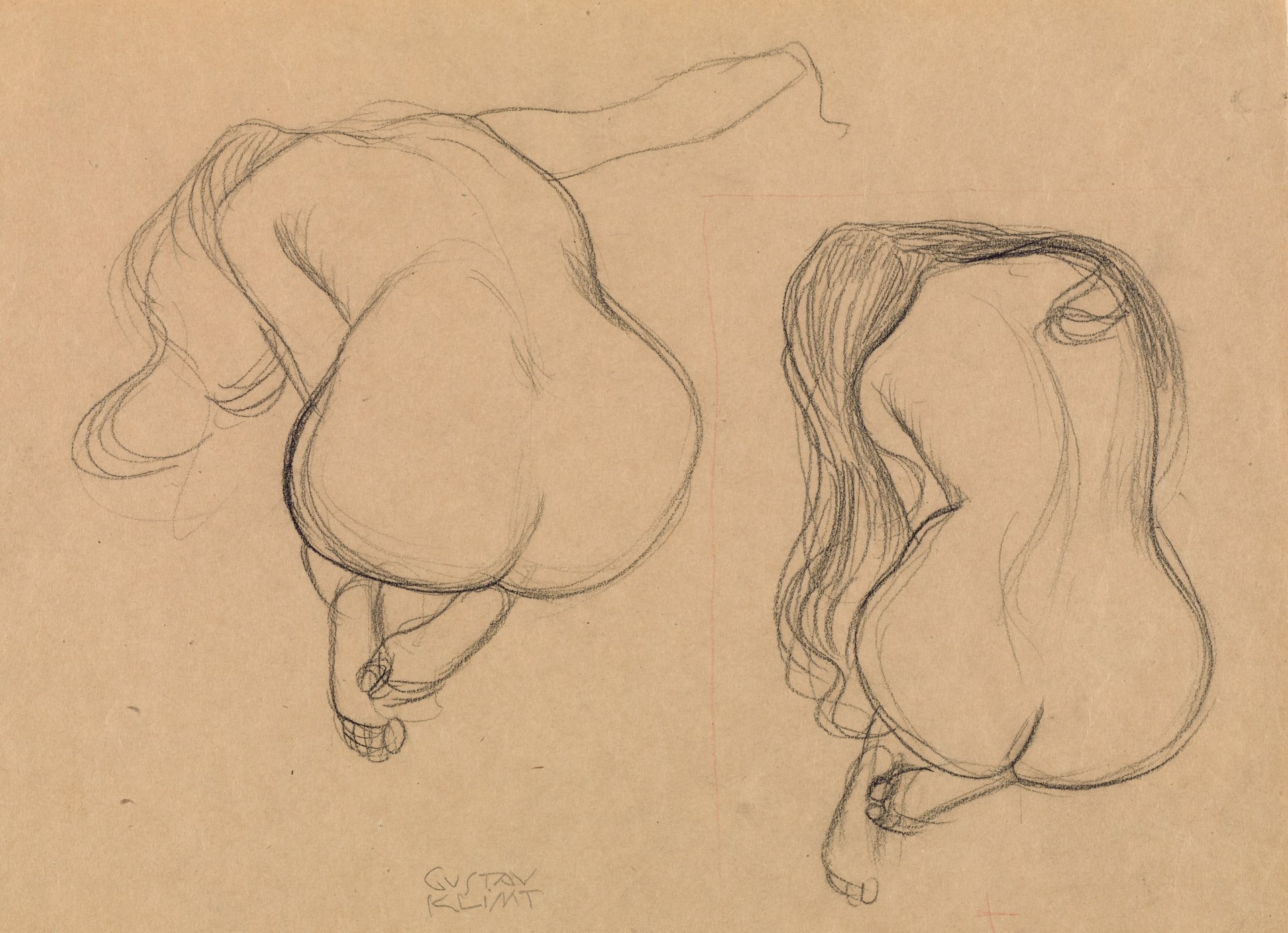 Gustav Klimt ‘Two Studies of a Seated Nude with Long Hair’, circa 1901-1902
Gustav Klimt ‘Two Studies of a Seated Nude with Long Hair’, circa 1901-1902Klimt’s golden style still inspires many contemporary artists who produce various images and reflections based on Klimt’s symbolism. ‘The Kiss’ is now one of the most quoted Klimt’s paintings of Klimt. With the founding of the Viennese Secession, he gave a path for many young artists of Europe who brought a fresh view to the art field. He also developed the notion of ‘Gesamtkunstwerk’ that later was used by many other artists and architects.
Klimt's art captivates not only through the allure of its golden foliage and beautiful ladies but also through its mystical spirits and philosophical meanings. The golden beauty of Art Nouveau and mysterious symbols intertwine in his art into the fascinating journey with nymphs, spirits and philosophy of life and death.
Explore further as an Art de Vivre subscriber! Delve into the novels that sparked the inspiration for your beloved films and series.
Photo Credits: © Wikipedia Commons

